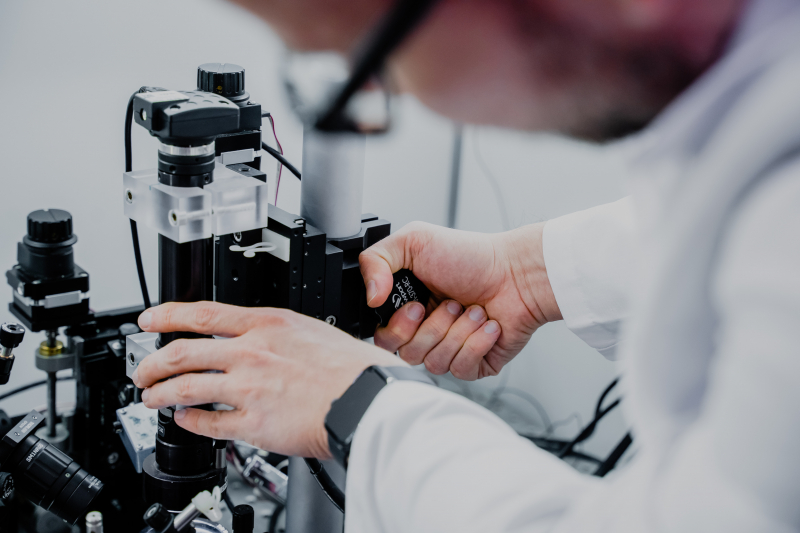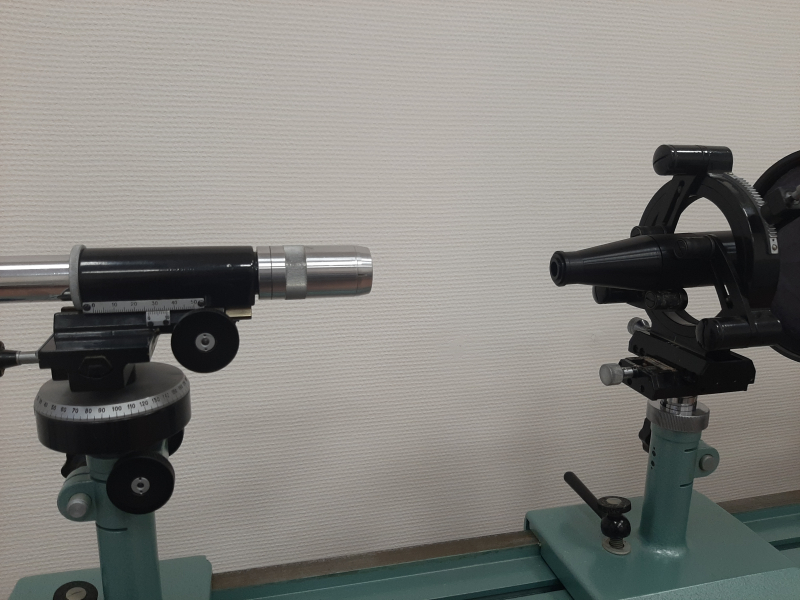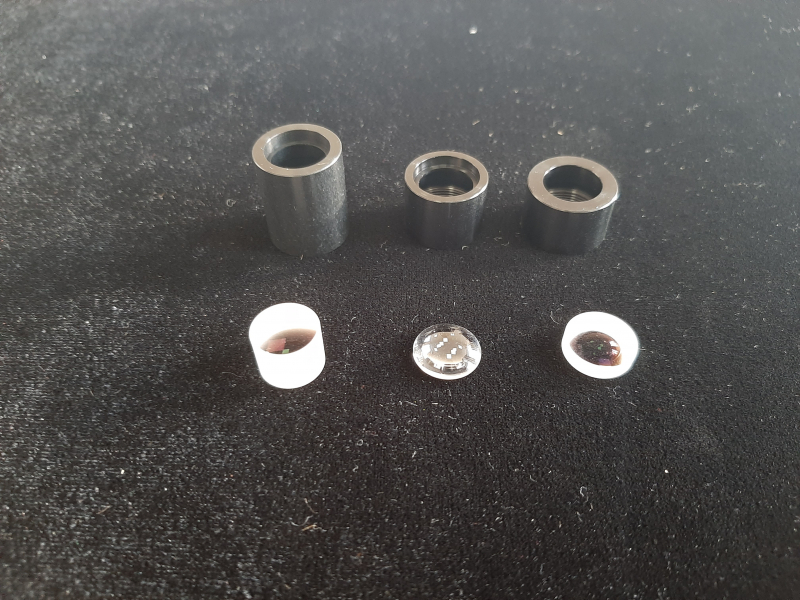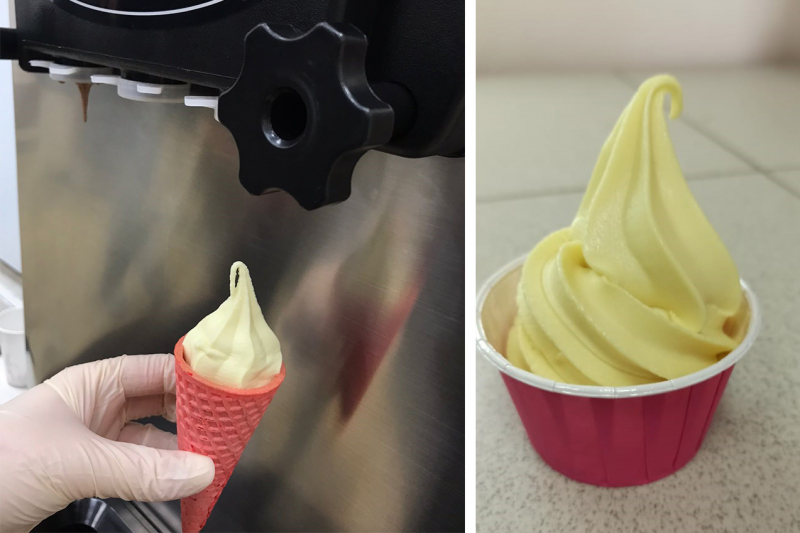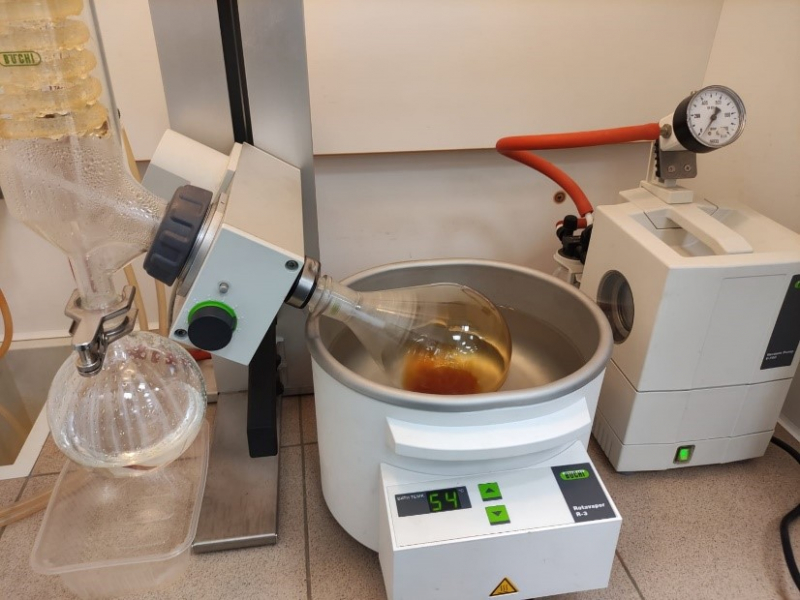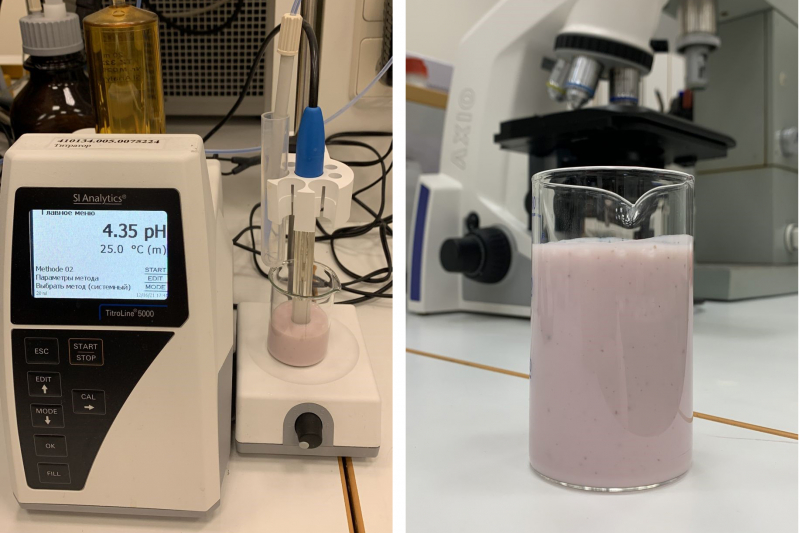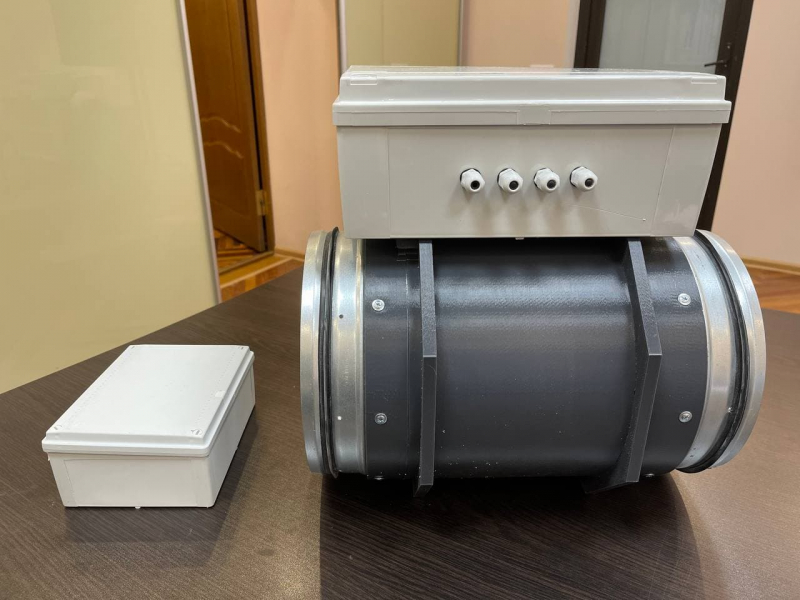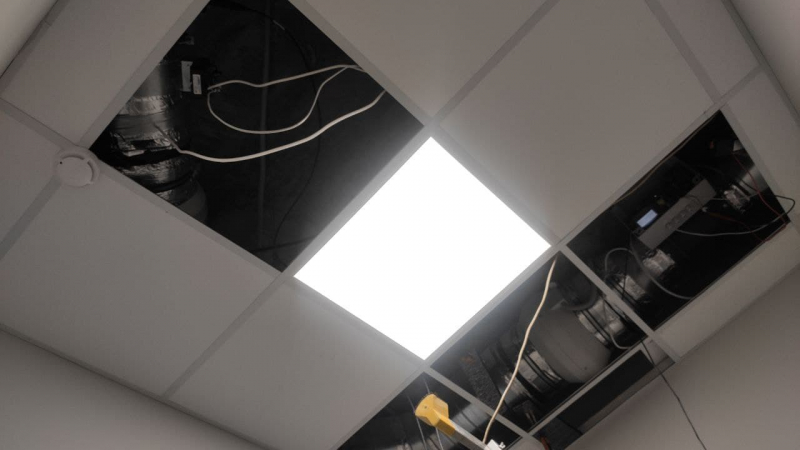The competition has been held annually since 2016 and is open to all ITMO students. The overall funding pool equals 2.5 million rubles, with the funds allocated gradually over the course of 18 or 24 months.
Robots, exoskeletons, and microscopes
The scope of the proposed technologies’ applications is quite diverse: it ranges from robotics, optical devices, and photosensors to functional foods and medicine. For instance, Anastasia Kozhina, a PhD student at the Faculty of Engineering Research, is working on a portable two-channel microscope. The device is intended for use in the analysis of biological samples. One of its lenses is wide-field and can be used to observe a large number of objects at once. The other lens has a high aperture to ensure the maximum resolution at 40x magnification.
A few projects were presented by PhD students of the Faculty of Control Systems and Robotics. Olga Borisova works on modular variable-stiffness actuators for exosuits of the upper and lower limbs. These modules, installed in elbow, shoulder, and knee areas, can change their rigidity from slack (allowing the user to move freely) to rigid (to compensate for external loads). Each module differs in size, mass, and compensation moment in order to better suit each corresponding human joint.
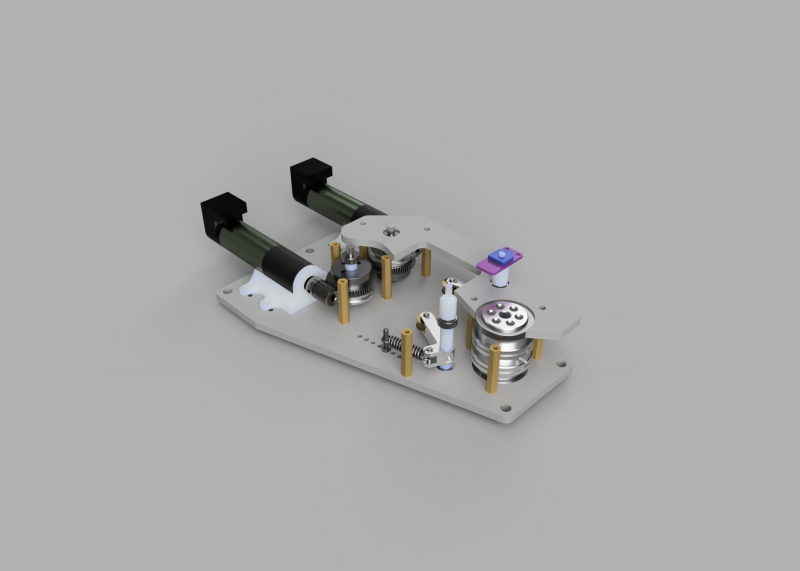
An elbow-section drive module. Photo courtesy of Olga Borisova
Student Aleksander Lukin has developed a synchronous motor based on permanent magnets for use in robotic drives – the motor has no EM torque ripple, opening up prospects for its use in telescopes and other optical devices, as well as in manipulators and wheels.
Students of the Institute of Advanced Data Transfer Systems, too, are working on a series of projects. A team headed by Liubov Azina has already developed an optical sensor that is able to detect flashes in electrical systems, potentially preventing fires at electrical substations and industrial plants. Artem Petrenko, in the meantime, showcased a photodiode based on gallous oxide, which functions in the UV spectrum and can be used as part of special monitoring devices for medicine, biology, communications, astronomy, and UV spectroscopy. Student Ekaterina Podlesnov developed a lithium battery for portable devices that utilizes a gel-based polymeric electrolyte infused with nanoparticles of metal oxides. This addition provides a significant boost to the battery’s capacities and makes it longer-lasting and more powerful.
Portable coagulometer and a coma monitoring tool
Another invention – this one by Institute of Advanced Data Transfer Systems student Daniil Shiryaev – has a potential application in medicine. Light & Care is an automated monitoring system for patients in a coma state or in early stages of rehabilitation. The system consists of sensors, which measure the patient’s heartbeat, body temperature, and blood oxygenation levels, and an LED bracelet. Upon detecting critical values, the bracelet changes color and begins to pulsate. In addition, the data is immediately sent via infrared signal to a server, which informs medical staff. A mock-up of the bracelet and a pilot version of the associated software are already complete; now, the team is working on the data transfer method. For the project’s next stage, the researchers will work on a functional prototype and begin patient testing, as well as develop a handy mobile app.

Light & Care. Video courtesy of the developers
However, this isn’t the only project by ITMO students that aims to solve an issue in the field of healthcare. Vera Strykalova, a second-year Master’s student at the ChemBio Cluster, is working on a portable device that assesses blood coagulability. The issue is particularly relevant in light of the coronavirus pandemic – one of the disease’s symptoms is an increased risk of thrombosis. Just like with a blood glucose monitor, all the patient needs to do is apply a drop of capillary blood onto a test strip and place it within the device.
The core principle of the gadget is based on a new technology: coagulability measurement in micropores. Using the capillary effect, the blood sample is drawn inside a test strip that contains a microporous membrane, which separates the reaction area into two cells. In the regular scenario, blood ions can freely move from one cell into another. But if fibrin strands are formed (a sign of blood clotting), the ions cannot penetrate the membrane. This results in an increase in electrical resistance across the whole system – manifested as a gradual reduction in electrical current. Based on this data, the device can quickly provide handy graphs.
Diagnostics platforms for pathogen detection
A similar principle lies at the core of a pathogen-detecting device. Anna Baldina, a PhD student at the ChemBio Cluster and an engineer at the Infochemistry Scientific Center, has designed a diagnostics platform that detects bacteria of Staphylococcus aureus. The system consists of electrochemical sensors based on printed electrodes sensitive to the bacteria, as well as a potentiostat and the corresponding software. The presence of the pathogen is detected based on electrochemical signals – the result of an antibody-antigen reaction. The signals are registered and processed by the potentiostat, with the resulting data converted into a format accessible to medical specialists.
A diagnostics platform for the detection of golden staph bacteria, developed by Anna Baldina's team. Photo by Ekaterina Shevyreva / ITMO.NEWS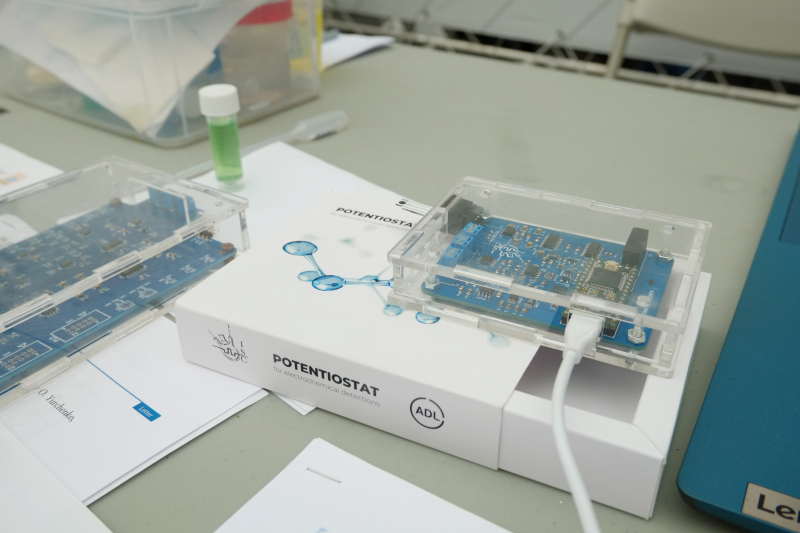
As a result, the team has developed a compact portable device that can quickly and efficiently detect the pathogen’s presence in a biological fluid. The project is nearly done (and has already been presented at conferences and other events) and ready to be used. The team has a number of agreements with clinics that wish to use the system in treatment of children and infants. The developers now plan to adapt the system to detect other widespread infections, as well as biomarkers.
Another project, too, involves a diagnostics platform – this one aimed at the Helicobacter pylori bacteria, which is responsible for a whole range of diseases of the gastrointestinal tract (ulcers, gastritis, and even stomach cancer). Oftentimes, doctors dealing with patients suffering from these ailments request tests for the presence of this pathogen. In addition to a biopsy and a stool analysis, a breath test is often used – it’s quite accurate and rarely results in false negatives. Evgeny Popov, a PhD student at the Institute of Advanced Data Transfer Systems, is working on a system that can quickly (within two hours) analyze a breath sample and detect traces of the pathogen. The system uses Raman spectroscopy, while special software processes the data and provides the doctor with a visualized graph.
Functional foods and microclimate control
Projects by students Olga Morozova and Iuliia Kropis, too, focus on the subjects of health and physical well-being. A PhD student at the Faculty of Energy and Ecotechnology and a junior researcher at the Faculty of Biotechnologies, Olga Morozova has designed a range of plant-based products.
The product line includes a frozen dessert that can be a worthy substitute to regular ice cream, a dry pancake mix, and a plant-based yogurt. The products, which are based on plant proteins, namely rice, oat, soy, and potato protein, are enriched with vitamins and prebiotics, with carrot pectin used as a stabilizer. The products are intended not only for vegans and the lactose intolerant, but also all those interested in healthy nutrition.
Right now, the team is working on optimizing the ingredient lists in order to further improve the taste of these products and make their structure resemble that of dairy-based foods. Particular focus is given to the optimal ratio of amino acids – to achieve the proper concentration, the researchers are using mathematical modeling. The project has already won a competition organized by St. Petersburg’s Committee for Science and Higher Education and has been exhibited at international scientific and student conferences.
The quality of indoor microclimate is highly important and has a direct effect on our well-being and work performance. A team led by Iuliia Kropis, a PhD student at the Faculty of Energy and Ecotechnology, has developed an adaptive system of distributed microclimate management that analyzes CO2 levels, air temperature, and humidity in a closed area. Based on that data, the system automatically adjusts the ventilation and air conditioning settings in the room.
The system not only helps maintain the required microclimate, but also reduces power usage. Another key advantage of this technology is that all of its elements (air quality sensors, control unit, and air supply valves) are embedded into the area’s engineering network. This means that the system will automatically adjust itself should the area be refurbished.
A prototype version installed in one of the university’s classrooms has already shown excellent results. Now, the team is developing a plan to integrate the system into other areas of the university.
